
This afternoon, we went ashore at Puerto Ayora again at the same dock. We boarded a bus to head up into the highlands to view a lava tube and Galapagos tortoises in the wild.
The entrance to this lava tube is so overgrown with vegetation that it would be easy to miss without a guide.
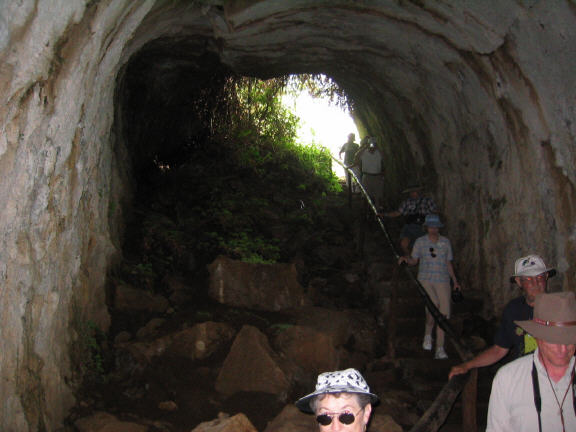
But once inside, we immediately descended a staircase down into the lava tube.
These tubes are formed when streams of molten lava cool more quickly on the outside than on the inside, crusting on top and creating a tunnel where the hot liquid rock flows inside.
They never told us how old this lava tube was.
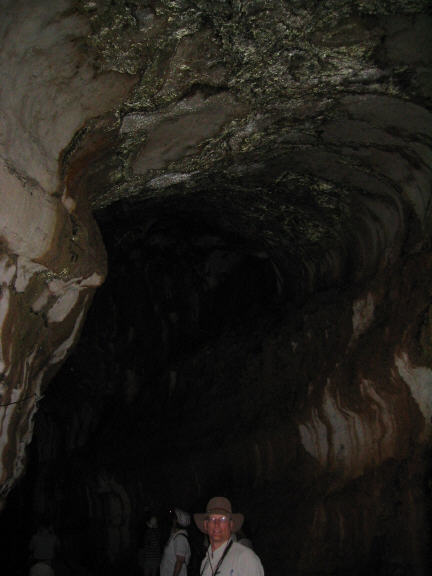
The ceiling was quite high in places, because there were quite a number of different lava flows that had dropped the floor level again and again, effectively "raising the roof" of the lava tube. A number of horizontal ridges ran the length of the lava tube. Each ridge represented a lava flow, with each new lava flow melting the rock below it and carving out a new, deeper floor.
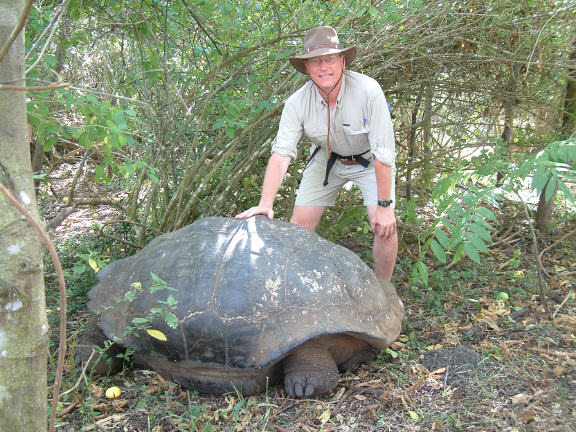
We were provided with another guide from the national park who would have an idea of where the tortoises were. We eventually found five tortoises. This huge one, w eighing an estimated 400 pounds, was perhaps over 100 years old. What a joy to have my picture taken with that big boy!
The guide told us that the oldest documented age of any tortoise in that area was 124 years. A grandfather, father and son all knew and recognized one particular tortoise whose territory was a part of their farm. This one tortoise was tracked by three generations of humans!
Another tortoise was held in captivity by the British royal family and was estimated to be 165 years old when it died.
Harriet, the giant tortoise who now lives in the Australian Zoo, is the oldest living creature on earth. In 2003 she was 172! Charles Darwin took her to England with him when he visited in 1835, and she's still going strong today.
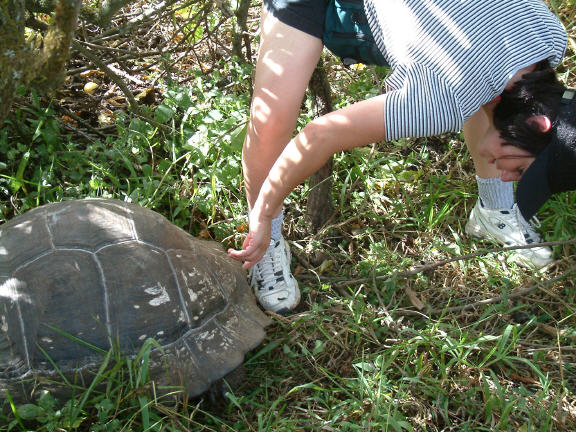
The only way to tell the difference between male tortoises and female tortoises is by the male's longer tail.
Our guide told us there was only one way to do a gender tail check--by peeking under the tortoise's shell.
Rebecca Orr, ever the curious scientist, was the only one to take the bait.
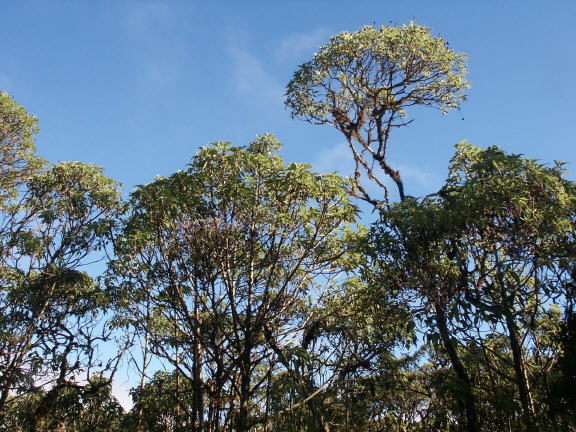
Magnificent Scalesia (sca-LEES-ee-a) trees. These "trees" from the sunflower family, found only in the Galapagos Islands, have developed a type of bark and wood.
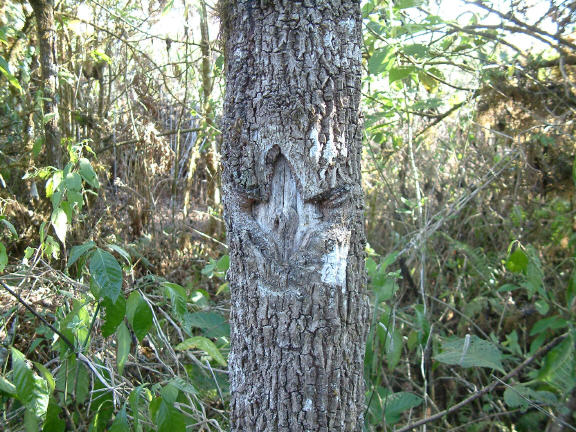
The wood is soft and there are no tree rings. They sure LOOK like trees, but they're really just huge herbaceous plants. It's actually a shrub! The trunk/stem is about 6-8 inches across. Here is the scar of some kind of wound that happened in the past.
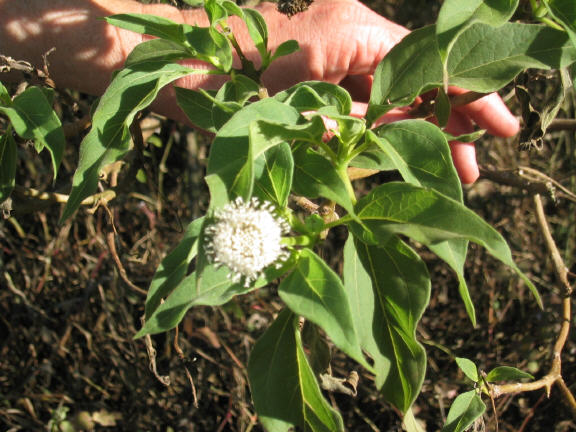
This is the scalesia's flower head. All the outer petals have been lost in this species of scalesia. The flower head actually consists of all individual flowers.
This may not look like a sunflower to you, because the sunflowers we're used to seeing have a very large flower head with a ring of daisy petals around the outside. But they are all part of the same sunflower family. These are DISTANT cousins to the ones we see here in North America.
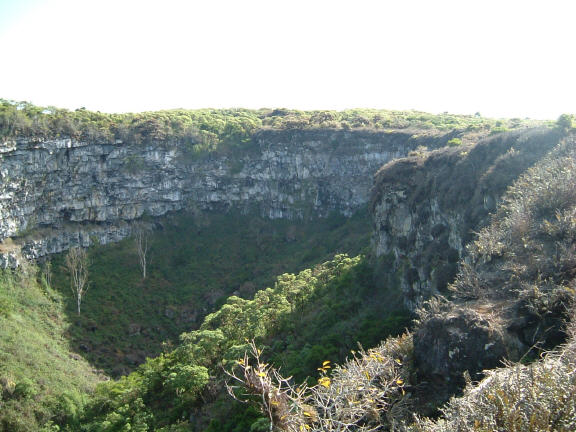
We visited a couple of giant pit craters called "The Twins," so close together that they are separated only by a road. These pit craters are about 750 feet across and about 75 feet deep. They are not calderas, the collapsed tops of old volcanoes. They form when the roofs of large subterranean lava tubes or magma chambers collapse on themselves.

That night, the cruise director invited Dr. Cumming to choose six ICR folks to eat at the captain's table, and she put Sue at the captain's right, which made her feel most honored!
The captain asked what we believe as creationists, and they had an opportunity to speak to him about truth and life and Jesus. It was a divine appointment, as one of the women in our group had shared the gospel with him before dinner and even gave him her Bible, on the condition that he promise to read it, which he promised to do.